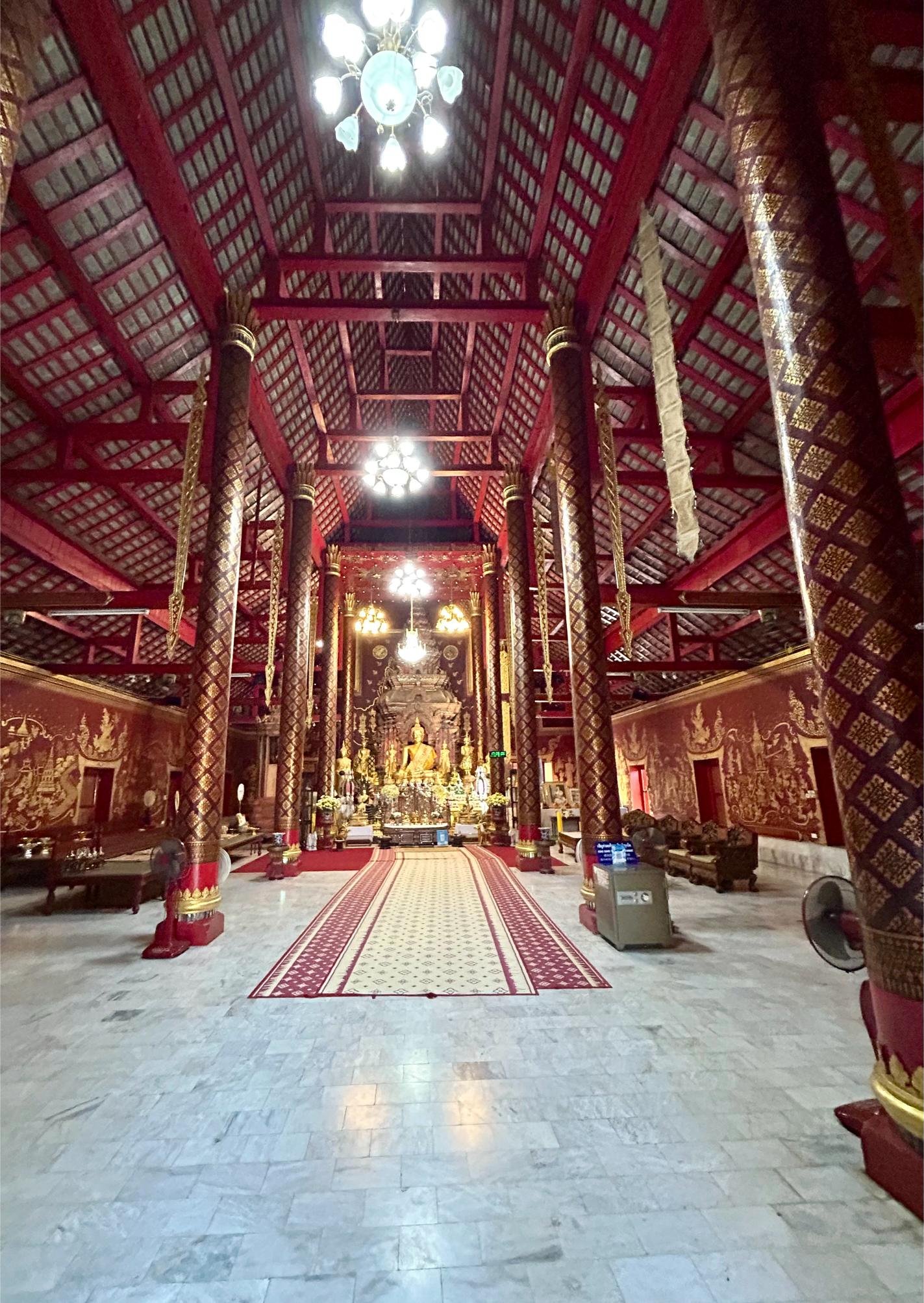Chiang Mai is at the heart of the Lanna culture and was the second major city built in the Lanna kingdom, after Chiang Rai which was founded by King Mon Rai in 1262. In fact Chiang Mai, founded in 1293, literally translates as New City in the Lanna language, and this morning we are off to visit a Lanna family who live in traditional housing and host visitors to learn about their culture, and most importantly, their food.
We are collected from our hotel by Kai, one of the villagers, and driven about thirty minutes outside of the city into beautiful countryside, full of farm land. It’s no surprise to learn that Lanna means Kingdom of a Million Rice Fields, but when we arrive at our family’s farmstead, Mhakhmhai Lanna, surrounded by tropical plants, it is clear that they grow far more than just rice.
We are greeted by a charming man called Joh, and introduced to a Dutch couple and another from Wales, who are also visiting the Raunkaew-Yanon family this morning. We are given traditional Lanna cloths to wrap around our waists which later act as aprons, and all sit together as Joh explains that his family moved to this land from China in 1854, and have been here now for six generations. They were originally rice farmers, but expanded their agricultural offerings and then moved into providing tourist experiences.
Joh explains that the traditional Lanna beliefs are a mixture of ancient spiritualism, Buddhism and Hinduism with a strong emphasis also on the principles of feng shui. As a result their houses, which are all made of teak, are built to specific designs and we are shown the wall facing south with photos of their deceased ancestors and the east-facing wall with pictures of Buddha and local monks.
We make offerings of flowers and incense to the spirit house outside and have a ceremony inside where we chew fermented tea with salt. We also try ‘mak’ which is a mixture of betelnut, tree bark and sap from an opium plant, wrapped in a pann leaf, and is a mild narcotic that the older generation chew. It tastes like antiseptic and numbs the mouth like novocaine, so was also used for dental pain in the past. We spit it out into the spittoon Joh passes round and then have to drink plenty of water to get rid of the taste.
His 85 year old uncle Lunan is sat outside making homemade cigarettes which we decline to try but the Dutch couple have a few puffs, joking that they feel duty bound to smoke it given they come from Amsterdam. And then Joh walks us through their ‘garden jungle’ showing us how they grow pomelo, turmeric, galangal, rose apple, peppercorn, mango, aniseed, starfruit, mulberry, lychee, birds of paradise, pandan, basil, banana, lemongrass, fig, tamarind, bamboo, coconut and more.
Next up is our cooking lesson but before we even get started we are served an ‘appetiser’, prepared by the female members of the family which includes coconut dumplings, tamarind rice, mango, taro root, rice cracker, banana chips and butterfly pea tea. It’s all delicious but when the very charming and funny 18 year old Warmup leads us to our own little kitchen area and tells us he, and Madame Nang his cousin, are going to teach us how to make six more recipes, we’re not sure we’ll have room to eat them all.
We start with pestle and mortars, grinding a chilli paste and a tomato paste respectively. Then he shows us how to scrape out coconut flesh and make coconut milk for our banana based dessert. We move to the raging open-fire stoves where Coman looks after the mushroom soup and I make Pad Thai and aubergine curry while trying not to roast my fingers and face in the scorching heat.
All the while Warmup talks us through the process and delights in making fun of us. During our well-earned lunch we ask him how he learnt to be so good at English. “My teachers,” he says. We congratulate him on being good at school and he laughs. “No. Teachers are called Google, YouTube and ChatGPT! I’m a good student,” he says proudly.
We sleep off all the food by our hotel pool that afternoon before heading out for a wander around some of the nearby temples in Chiang Mai’s old city. We start at Wat Umong, which is a meditation training centre and whose small temple has brightly painted pictures of the Buddha’s life inside, before continuing on to the red and gold glories of Wat Pan Ping, and the brightly coloured gate of Wat Chang Lam. We reach Wat Chiang Man, Chiang Mai’s oldest temple complex, just as it is closing but manage to see its incredible interiors as the doors are being closed on us.
Dusk is falling as we reach Wat Muentoom and the nearby Wat Chedi Luang, which is high on the list for us to see, but the crowds outside the temple are immense and there’s a heavy police presence. It transpires that King Rama X and the Queen are paying a royal visit to Chiang Mai today and have been giving alms to the poor before praying at this very temple.
There’s no way we can get into the temple so take a little backstreet detour and stumble upon a fabulous hidden restaurant called Pure Vegan Heaven. After almost two weeks of non-stop, and very limited, vegetarian Thai options we’re delighted to tuck into a veggie burger and a falafel wrap, and they prove to be one of the best meals we’ve had since we arrived.
Happy and rather full we make our way back to the hotel, deciding to have an early night ahead of a pre-dawn wake-up call for our adventure outside of the city tomorrow morning.





























































